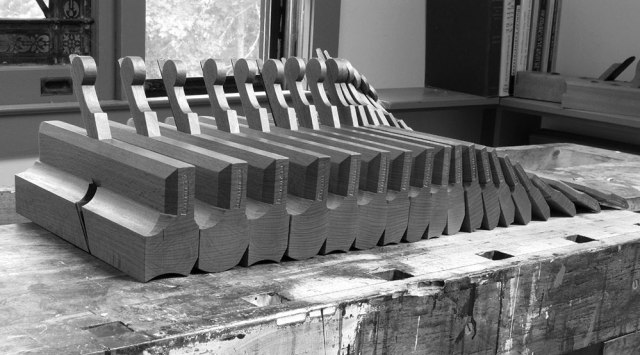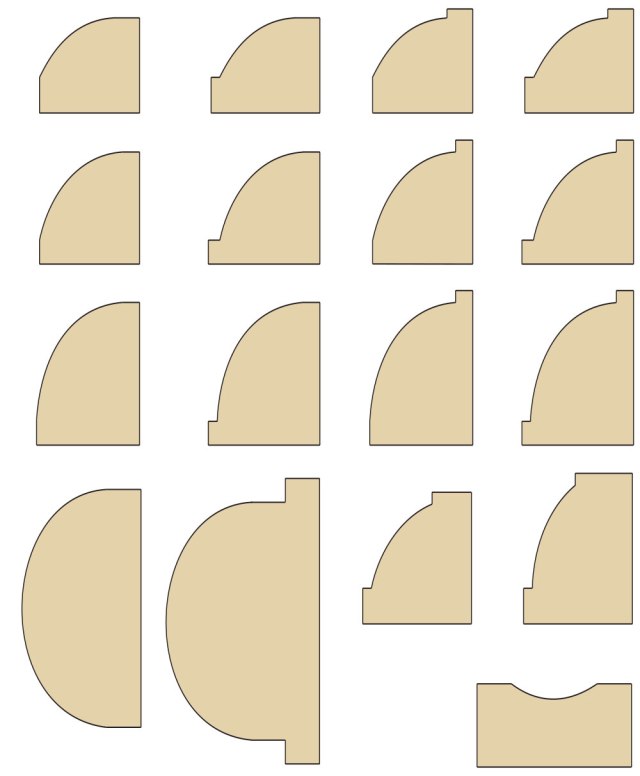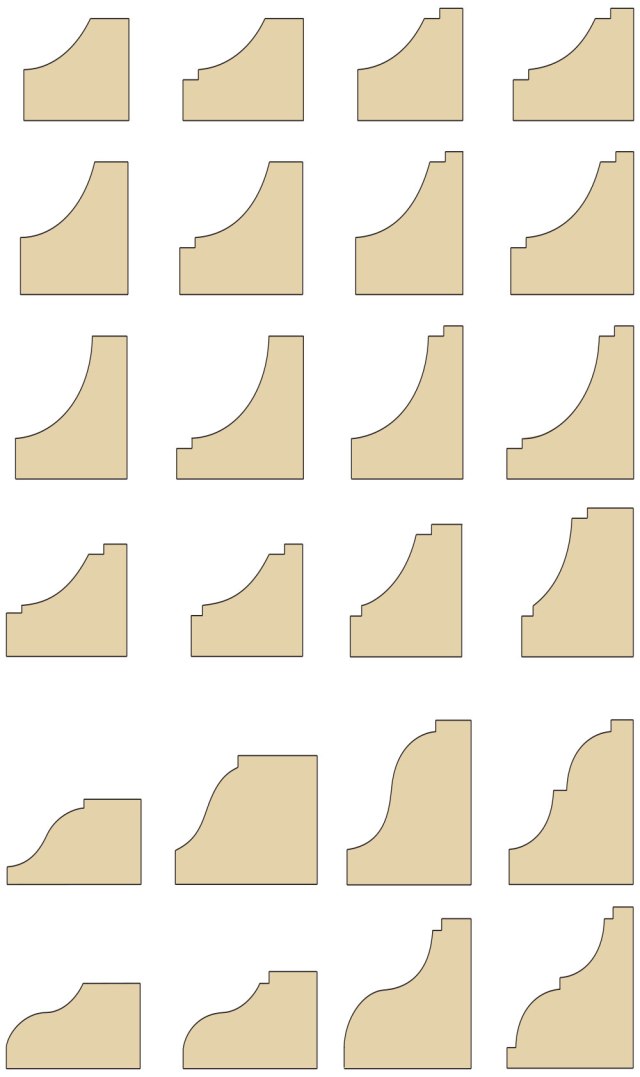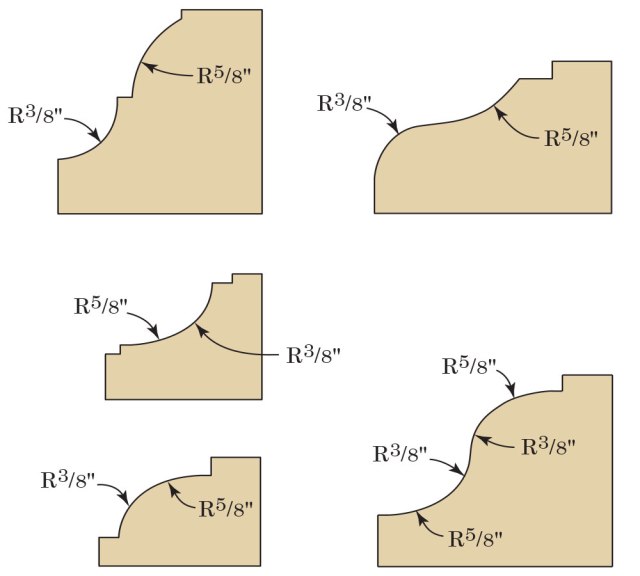
This is an excerpt from “Mouldings in Practice” by Matthew Sheldon Bickford.
When I first became aware of hollows and rounds I read about the heralded “half set.” A half set of hollows and rounds is 18 planes, nine pairs, that incrementally increase in radius from 1/8″ at the low end to 1-1/2″ at the high end. The half set of planes is generally the even numbered pairs in the previously referenced chart. (A full set is 36 planes, and also includes the odd numbers.)
A half set of hollows and rounds is an extraordinarily comprehensive grouping of planes that allows the owner to produce a range of moulding profiles that exist in the smallest spice box and largest secretary. Centuries ago, the half set was often acquired over time.
For many users, myself included, the half set covers an unnecessarily broad range of work, and represents an undue expense. Many woodworkers narrow their plane choice down to match the scale of work that catches their fancy. For example, if you work only with 4/4 stock, then sizes above No. 8 may go unused. Starting with just a single pair of hollows and rounds – and an efficient method to accurately establish rabbets and chamfers – allows the production of dozens of different profiles.
The simplicity of combining only one convex and one concave arc might seem limiting. There are, however, scores of profiles you will be able to produce with just a single pair of hollows and rounds. These profiles will often contain minute differences – adding a vertical or horizontal fillet, or flat, adjusting the size of that fillet, increasing the curvature or changing the general angle of the profile. These small differences are important and are often glossed over or neglected on a router table.


Adding a second pair of hollows and rounds to your tool chest, a step I always encourage, increases the number of possible profiles far more than two-fold. Not only will you be able to create the 41 profiles shown above in two different sizes, you will also be able to mix the concave with the convex to form various cove and ovolo combinations and ogees. Additionally, you can mix concave with the concave and convex with the convex to form elliptical shapes. It is at this stage that you will unlock the true versatility of these planes.

— MB